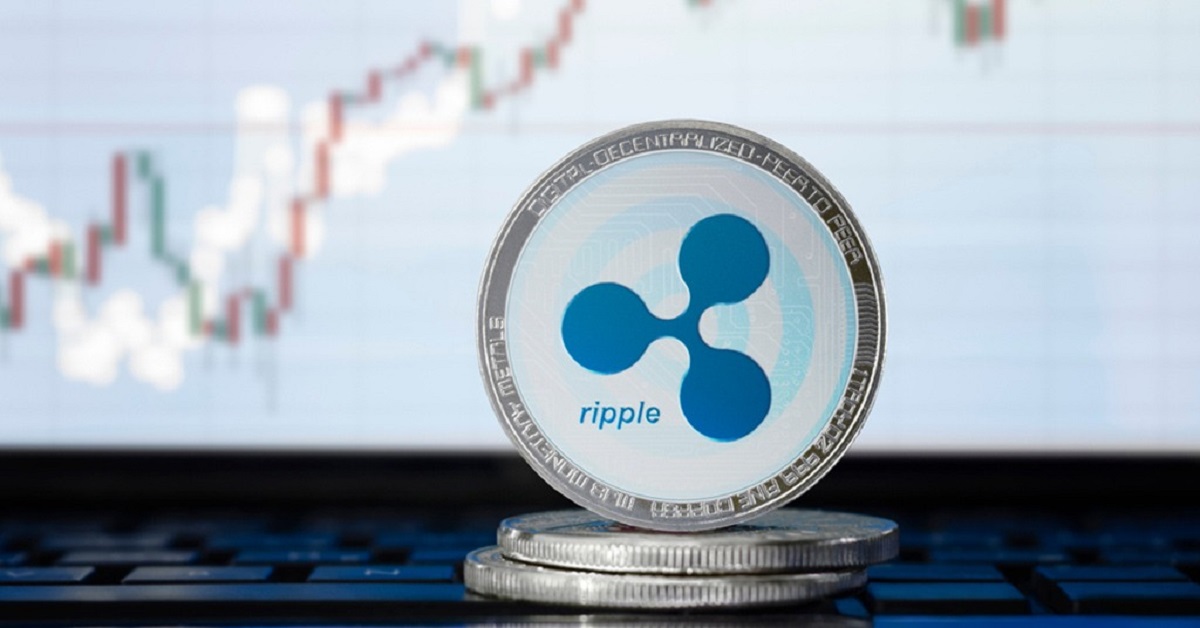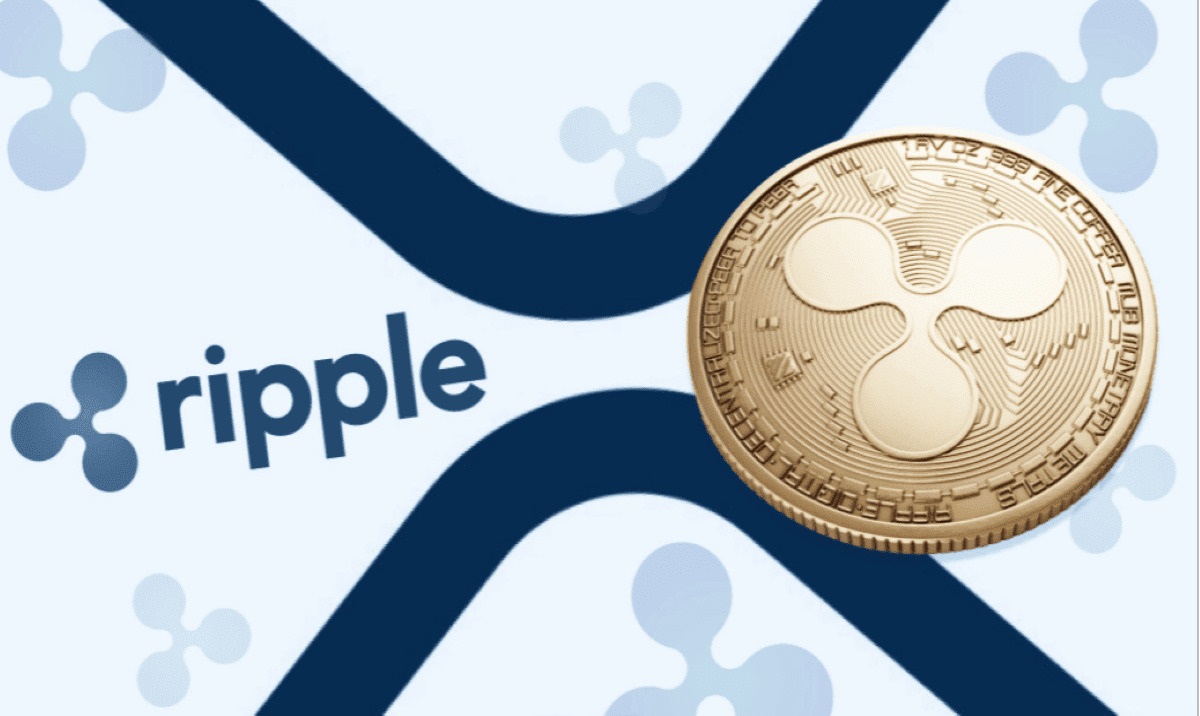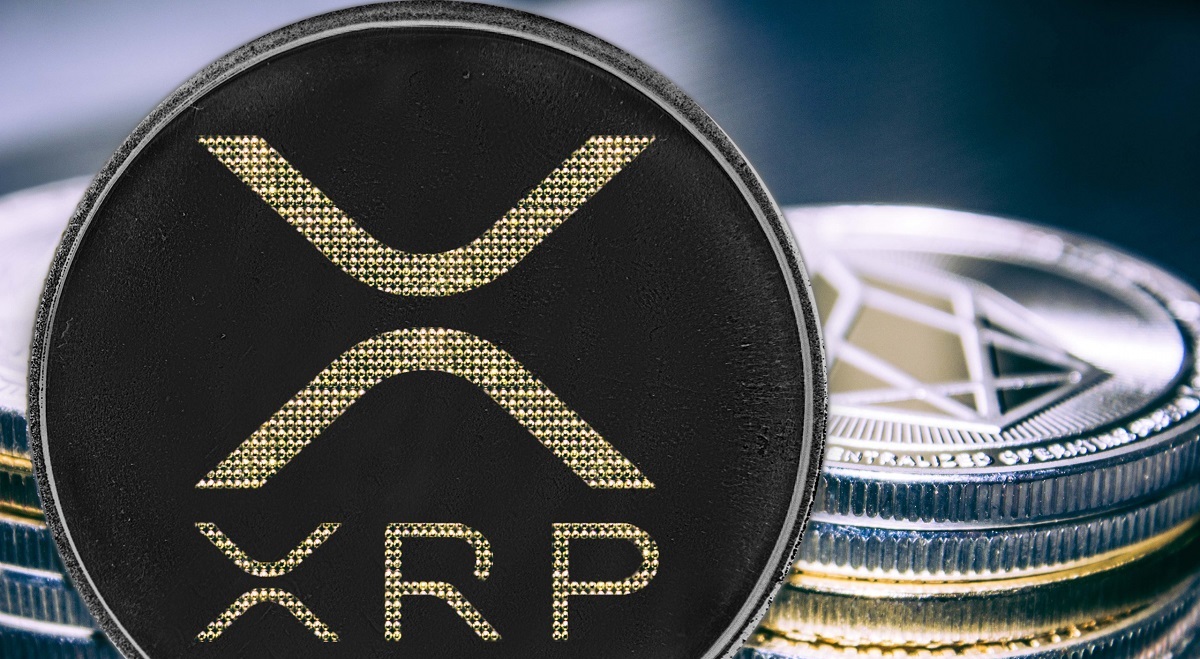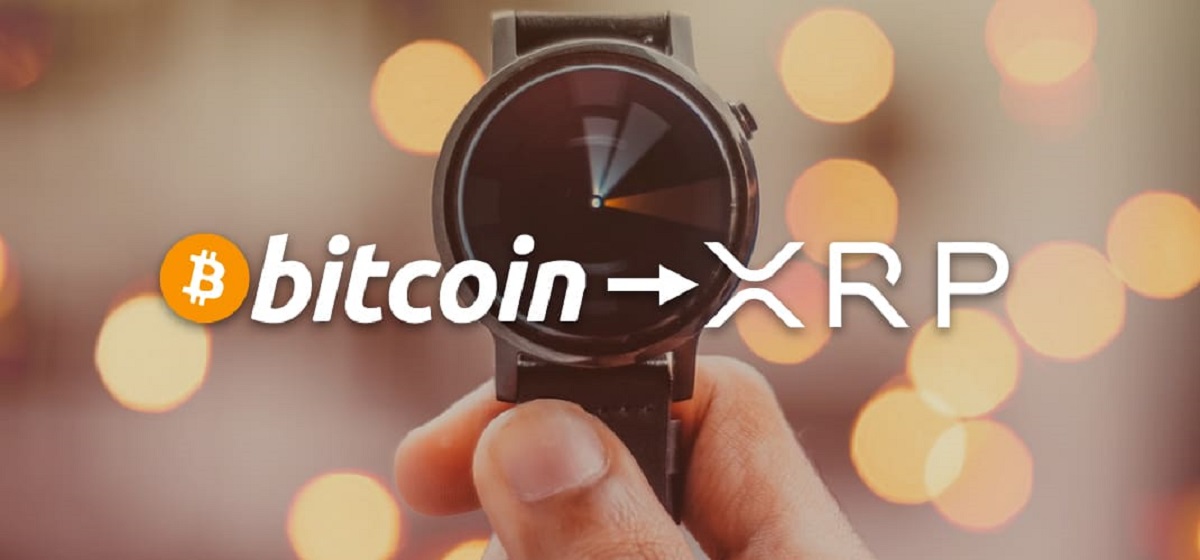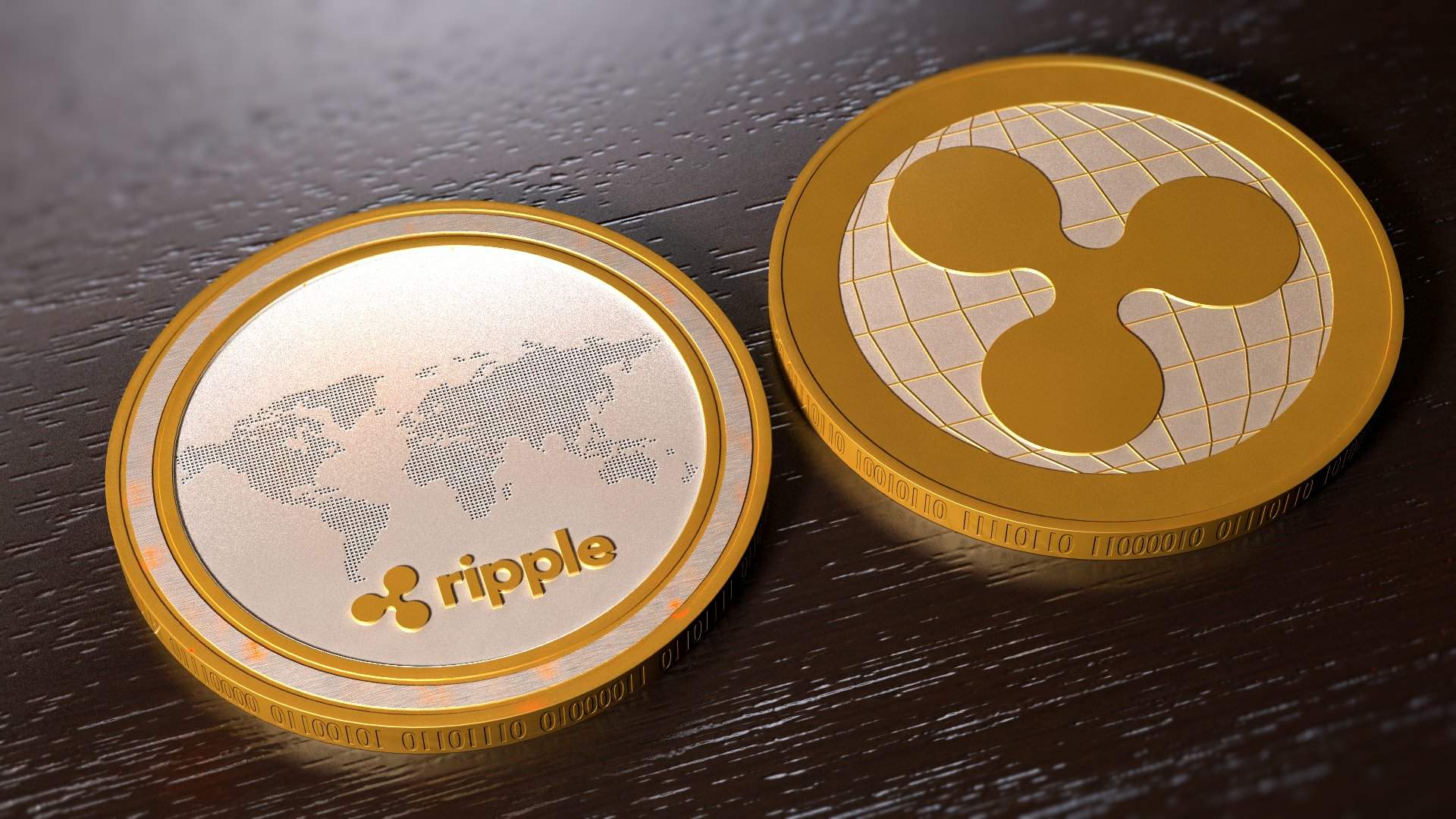Introduction
Ripple is a cryptocurrency that has been making waves in the financial world with its unique approach to payment systems and transactions. Unlike traditional cryptocurrencies like Bitcoin, Ripple is not just a digital currency but also a technology platform that enables fast, secure, and low-cost international money transfers.
Launched in 2012, Ripple has gained popularity for its ability to provide near-instantaneous transactions with minimal fees. This has made it an attractive option for individuals and businesses looking for efficient and cost-effective cross-border payments. In fact, Ripple’s technology has been adopted by major financial institutions, including Santander, American Express, and Standard Chartered, further cementing its position in the global financial landscape.
The main goal of Ripple is to revolutionize the way money moves around the world. Traditional banking systems often rely on slow and cumbersome processes that involve multiple intermediaries, resulting in high fees and long settlement times. Ripple aims to eliminate these inefficiencies by utilizing its native digital asset, XRP, and its decentralized platform.
Ripple’s technology, known as the RippleNet, enables direct transfers between parties, bypassing the need for traditional banking intermediaries. It operates on a distributed ledger technology called the XRP Ledger, which maintains a record of all transactions and ensures their security and integrity. This decentralized nature of Ripple not only enhances transaction speed but also reduces costs, making it an attractive alternative to traditional banking systems.
Unlike Bitcoin and other cryptocurrencies, which rely on proof-of-work algorithms to validate transactions, Ripple uses a unique consensus algorithm called the Ripple Protocol Consensus Algorithm (RPCA). This algorithm allows for faster and more efficient validation of transactions, making Ripple more scalable and capable of handling a higher volume of transactions compared to other cryptocurrencies.
In the following sections, we will delve deeper into how Ripple works, its key features, and its advantages and disadvantages compared to Bitcoin and traditional banking systems. By understanding the intricacies of Ripple, you will gain a comprehensive understanding of its potential impact on the future of finance.
What is Ripple?
Ripple is a digital currency and a technology platform that aims to transform the way financial transactions are conducted. It was developed in 2012 by a team of computer programmers led by Chris Larsen and Jed McCaleb. Unlike traditional cryptocurrencies like Bitcoin, which were designed to be decentralized and independent of any central authority, Ripple operates as a centralized platform that aims to bridge the gap between traditional banking and digital currencies.
At its core, Ripple is both a digital payment protocol and a cryptocurrency. The protocol allows for secure, fast, and low-cost transactions using its native currency XRP. The Ripple payment protocol was specifically designed to enable remittances and cross-border payments between financial institutions.
One key feature that sets Ripple apart from other cryptocurrencies is its focus on speed and scalability. While Bitcoin transactions can take several minutes to confirm, Ripple transactions can settle within seconds. This makes Ripple an attractive option for both individuals and businesses looking for faster and more efficient payment solutions.
Ripple operates on a decentralized ledger technology known as the XRP Ledger. This ledger is maintained by a network of independent validating servers that validate and authorize transactions. This consensus mechanism allows for faster and more reliable transactions, as there is no reliance on mining or proof-of-work algorithms.
Another important aspect of Ripple is its role as a bridge currency. In traditional banking systems, cross-border transactions often require multiple intermediaries and are subject to high fees and long settlement times. Ripple aims to simplify this process by acting as a bridge currency between different fiat currencies. This means that instead of converting one fiat currency to another through multiple intermediaries, financial institutions can use XRP as a universal currency to facilitate seamless and cost-effective transactions.
Ripple has gained significant traction within the financial industry, with many major banks and financial institutions adopting its technology. The RippleNet, which is a network of banks and payment providers using Ripple’s technology, allows for interoperability and seamless integration between different financial institutions. This has the potential to revolutionize cross-border payments by making them faster, cheaper, and more secure.
Overall, Ripple is not just a cryptocurrency but a comprehensive technology platform aimed at transforming the way money is transferred globally. With its emphasis on speed, scalability, and cost-effectiveness, Ripple has the potential to disrupt traditional financial systems and create a more efficient and inclusive global economy.
How Does Ripple Work?
Ripple works through its unique technology platform, which consists of three core components: the XRP Ledger, RippleNet, and XRP cryptocurrency.
The XRP Ledger is a distributed ledger technology that serves as the underlying infrastructure for Ripple’s payment system. It is a decentralized database that maintains a record of all transactions and balances on the network. Unlike other blockchain-based networks, the XRP Ledger does not rely on mining for transaction validation. Instead, it utilizes a consensus protocol called the Ripple Protocol Consensus Algorithm (RPCA). This consensus algorithm allows for fast and efficient transaction validation, resulting in quick settlement times and low transaction fees.
RippleNet is the network of banks, payment providers, and other financial institutions that use Ripple’s technology for cross-border transactions. It allows these institutions to connect and transact with each other seamlessly. RippleNet utilizes the XRP Ledger for real-time settlement and liquidity management. By leveraging RippleNet, financial institutions can reduce costs, improve efficiency, and enhance the overall speed and security of cross-border payments.
The XRP cryptocurrency, also known as XRP, is the native digital asset of Ripple. It serves as a bridge currency that facilitates the transfer of value between different fiat currencies. When a financial institution wants to make a cross-border payment, it can use XRP as an intermediary currency. For example, if a bank wants to send money from USD to EUR, it can convert the USD to XRP, send the XRP to the recipient, and then convert the XRP to EUR. This process eliminates the need for multiple intermediaries and reduces both the time and cost of the transaction.
Ripple’s technology works through a process called “rippling.” When a payment is initiated on the Ripple network, it creates a ripple effect by updating the balances of connected accounts. This ensures that all parties involved in the transaction have a real-time view of their account balances. The ripple effect also allows for the seamless transfer of funds between different currencies and financial institutions.
Moreover, Ripple’s technology enables the use of gateways, which are entities that facilitate the transfer of funds between the traditional financial system and the Ripple network. Gateways act as intermediaries, accepting deposits in various fiat currencies and issuing corresponding amounts of XRP on the network. This allows users to seamlessly enter and exit the Ripple network, bridging the gap between traditional banking systems and the world of digital currencies.
Overall, Ripple’s innovative technology platform revolutionizes the way cross-border payments are conducted. Through its decentralized ledger, network of financial institutions, and native cryptocurrency, Ripple enables fast, secure, and cost-effective transactions, making it an attractive option for businesses and individuals seeking to streamline their global payment processes.
Key Features of Ripple
Ripple offers several key features that set it apart from other cryptocurrencies and traditional banking systems. These features contribute to its increasing popularity and adoption in the financial industry. Let’s explore some of the key features of Ripple:
- Speed and Efficiency: One of the standout features of Ripple is its ability to facilitate near-instantaneous transactions. While traditional banking systems can take days for cross-border transactions to settle, Ripple transactions settle within seconds. This level of speed and efficiency is made possible by the Ripple Protocol Consensus Algorithm (RPCA), which allows for fast transaction validation and settlement on the XRP Ledger.
- Low Transaction Costs: Ripple’s focus on cost-effectiveness is evident in its low transaction fees. The fees associated with Ripple transactions are significantly lower than those of traditional banking systems. This makes Ripple an attractive option for individuals and businesses looking to reduce their transaction costs, especially for international payments.
- Scalability: Ripple’s technology is designed to handle a high volume of transactions, making it highly scalable. As the network grows, the speed and efficiency of transactions are not compromised, ensuring a seamless user experience even with increased transaction activity.
- Bridging Fiat Currencies: Ripple acts as a bridge currency between different fiat currencies, eliminating the need for multiple intermediaries and complex exchange processes. This feature allows for streamlined and cost-effective cross-border transactions, enabling direct transfers between different currencies on the Ripple network through the use of XRP.
- Secure and Transparent: Like other cryptocurrencies, Ripple operates on a decentralized ledger known as the XRP Ledger. This means that transaction data are securely recorded and verified across multiple nodes on the network, making it highly resistant to tampering and fraud. Additionally, the transparency of the ledger ensures that all participants have visibility into the transaction history.
- Institutional Adoption: Ripple’s technology has gained significant traction within the financial industry. Many major banks and financial institutions around the world have embraced Ripple and integrated it into their payment systems. This institutional adoption has further validated Ripple’s potential as a disruptive force in the global financial ecosystem.
These key features of Ripple make it a compelling choice for businesses, financial institutions, and individuals looking for a more efficient, cost-effective, and secure way to conduct cross-border transactions. As Ripple continues to expand its network and increase its capabilities, it holds the potential to revolutionize the way money is transferred globally.
Ripple vs Bitcoin
Ripple and Bitcoin are both popular cryptocurrencies, but they differ significantly in terms of their purpose, technology, and use cases. Let’s compare Ripple and Bitcoin to understand their key differences:
Centralization vs Decentralization: One of the fundamental differences between Ripple and Bitcoin is their approach to centralization. Bitcoin, being the first decentralized cryptocurrency, operates on a decentralized network where transactions are verified by miners through a proof-of-work consensus mechanism. Ripple, on the other hand, operates as a more centralized platform that leverages a consensus algorithm known as the Ripple Protocol Consensus Algorithm (RPCA) to validate transactions. This centralization allows for faster transaction speed and scalability but raises concerns regarding control and authority.
Transaction Speed and Scalability: Ripple is well-known for its fast transaction speed, with payments settling within seconds. Bitcoin, on the other hand, experiences slower transaction times due to the need for mining and validation through proof-of-work. Additionally, Ripple has demonstrated higher scalability, with the ability to handle a higher volume of transactions compared to Bitcoin.
Use Cases: Ripple’s primary focus is on facilitating cross-border payments and improving the efficiency of the global financial system. Its technology platform, RippleNet, has been adopted by numerous financial institutions and banks for seamless and cost-effective cross-border transactions. Bitcoin, on the other hand, is primarily used as a decentralized digital currency and store of value, with a focus on peer-to-peer transactions and as an alternative to traditional fiat currencies.
Consensus Mechanism: The consensus mechanisms employed by Ripple and Bitcoin differ significantly. Bitcoin relies on proof-of-work, where miners compete to solve complex mathematical problems to validate transactions and add them to the blockchain. Ripple, on the other hand, uses the Ripple Protocol Consensus Algorithm, which does not require mining. Instead, a network of trusted validating servers reaches a consensus on the validity of transactions.
Supply and Distribution: Another significant difference lies in their supply and distribution models. Bitcoin has a finite supply of 21 million coins, with its distribution based on mining rewards. Ripple, on the other hand, already has its maximum supply of 100 billion XRP coins, with a significant portion held by the company itself. This distribution and control by Ripple Labs have raised concerns about centralization and the influence of the company on the price and direction of XRP.
Accepted Cryptocurrency vs Intermediary Currency: Bitcoin is widely accepted as a digital currency, with a growing number of merchants and businesses accepting it as a form of payment. Ripple, however, is primarily used as an intermediary currency for facilitating cross-border transactions. Its primary purpose is to bridge different fiat currencies on the Ripple network, allowing for quick and cost-effective transfers between financial institutions.
Overall, while both Ripple and Bitcoin are prominent cryptocurrencies, they have distinct purposes and approaches. Ripple focuses on facilitating cross-border payments and offers fast transaction speed, scalability, and a centralized platform. Bitcoin, on the other hand, emphasizes decentralization, store of value, and peer-to-peer transactions. Understanding these differences helps individuals and businesses choose the cryptocurrency that aligns with their specific needs and objectives.
Ripple vs Traditional Banks
Ripple, with its innovative technology platform, is positioning itself as a disruptive force in the world of traditional banking. Let’s compare Ripple to traditional banks and explore the key differences between the two:
Speed and Efficiency: Traditional banks often struggle with slow and costly cross-border transactions. Settlement times can take several days, and intermediary banks are involved in the process, which leads to higher fees. Ripple, on the other hand, offers near-instantaneous transactions that settle within seconds, bypassing the need for multiple intermediaries. This significantly reduces transaction times and costs, making Ripple a compelling alternative for individuals and businesses seeking faster and more efficient payment processing.
Cost-effectiveness: Traditional banks are notorious for charging high transaction fees, especially for international transfers. These fees can vary depending on the transfer amount and destination country. Ripple, with its low transaction fees, provides a cost-effective alternative. By utilizing RippleNet and XRP as a bridge currency, financial institutions can achieve significant cost savings, resulting in more affordable cross-border transactions.
Transparency: Traditional banking systems are often criticized for their lack of transparency. Customers have limited visibility into the routing and processing of their transactions, making it difficult to track and verify the movement of funds. Ripple, in contrast, operates on a decentralized ledger technology known as the XRP Ledger. This ledger provides transparent and immutable transaction records, allowing participants to have real-time visibility into account balances and transaction history. The transparency of Ripple’s ledger helps build trust and accountability in the global financial ecosystem.
Accessibility: Traditional banks have geographic limitations, requiring customers to have physical access to their branches or ATMs. This can be a significant challenge for individuals in remote areas or for businesses conducting international transactions. Ripple, being a digital platform, offers accessibility regardless of geographic location. As long as there is an internet connection, users can access and utilize Ripple’s services, bridging the gap between different regions and enabling global financial inclusion.
Integration and Interoperability: Traditional banking systems often lack interoperability, making it challenging for different banks and payment networks to seamlessly transact with each other. Ripple, with its RippleNet network, provides an interconnected platform that allows for easy integration between financial institutions. This interoperability simplifies cross-border transactions and enhances overall efficiency, enabling financial institutions to expand their global reach and deliver better customer experiences.
Innovation and Disruption: While traditional banks have been slow to embrace technological advancements, Ripple has been at the forefront of blockchain-based innovation in the financial sector. Ripple’s technology has garnered significant attention and adoption by major banks and financial institutions worldwide, offering a glimpse into the future of finance. Ripple’s disruptive potential lies in its ability to overhaul outdated banking systems and revolutionize international payments, making them faster, more cost-effective, and more accessible for all.
Overall, Ripple presents a compelling alternative to traditional banks, addressing some of the key pain points of the existing financial system. Its focus on speed, cost-effectiveness, transparency, accessibility, integration, and innovation positions Ripple as a disruptor in the global financial landscape, setting the stage for a new era of efficient and inclusive financial services.
Advantages of Ripple
Ripple offers several advantages that make it a unique and appealing option for individuals, businesses, and financial institutions. Here are some of the key advantages of Ripple:
- Near-Instantaneous Transactions: Ripple is renowned for its ability to settle transactions within seconds, offering a significant speed advantage over traditional banking systems. This rapid transaction speed enables faster cross-border payments, improving overall efficiency and customer experience.
- Cost-Effective Payments: Ripple’s low transaction fees make it an attractive option for individuals and businesses looking to reduce the cost of cross-border transactions. The elimination of intermediaries and the use of XRP as a bridge currency contribute to lower transaction costs, potentially saving businesses significant amounts of money.
- Enhanced Payment Security: Ripple’s use of a decentralized ledger technology ensures the security and integrity of transactions. The transparency and immutable nature of the XRP Ledger allow for increased trust and accountability, reducing the risk of fraud and manipulation.
- Improved Liquidity Management: Ripple’s native digital asset, XRP, serves as a liquidity tool for financial institutions. By utilizing XRP as an intermediary currency, banks can reduce the need for holding large sums of money in various foreign currencies. This enables more efficient liquidity management and reduces associated costs.
- Global Reach and Access: Ripple’s digital platform provides accessibility to individuals and businesses around the world, regardless of their geographic location. This global reach allows for seamless integration between different financial institutions, fostering improved cross-border connectivity and expanding opportunities for international trade.
- Institutional Adoption: Ripple has gained significant support and adoption from major banks and financial institutions globally. This institutional backing lends credibility to Ripple’s technology and increases its potential for widespread adoption, further enhancing its advantages and impact on the financial industry.
- Streamlined Cross-Border Transactions: Ripple’s technology platform, RippleNet, simplifies cross-border payments by offering a standardized and interoperable system. This simplification results in seamless and faster transactions, reducing the complexity and frustration often associated with traditional banking systems.
- Strategic Partnerships: Ripple has formed strategic partnerships with leading financial institutions, including Santander, American Express, and Standard Chartered. These partnerships have helped Ripple gain access to a vast network of customers and opened the door to more extensive adoption of Ripple’s technology.
Overall, Ripple’s advantages in terms of speed, cost-effectiveness, security, liquidity management, accessibility, institutional adoption, streamlined transactions, and strategic partnerships position it as an innovative and promising technology platform. As Ripple continues to evolve, it has the potential to reshape the future of cross-border payments and revolutionize the global financial ecosystem.
Disadvantages of Ripple
While Ripple offers numerous advantages, it also has a few disadvantages that should be considered. Here are some of the key disadvantages of Ripple:
- Centralization Concerns: Ripple’s more centralized approach raises concerns among cryptocurrency purists who prioritize decentralization. Unlike Bitcoin and other cryptocurrencies, which operate on decentralized networks, Ripple’s network relies on a smaller number of validating servers, leading to centralization concerns and potential concentration of power.
- XRP Distribution: Ripple controls a significant amount of XRP, the native digital asset used on its platform. This ownership and control raise questions about the potential influence Ripple may exert over the price and direction of XRP. Critics argue that such centralized control goes against the principles of decentralization and poses risks for investors and participants in the network.
- Dependency on RippleNet: While Ripple’s technology has gained significant adoption by financial institutions, its success heavily relies on the continued adoption and expansion of the RippleNet network. Any setbacks or limitations in the growth of this network may impact the overall success and utility of Ripple’s technology.
- Regulatory Uncertainty: As with any cryptocurrency, Ripple operates in a rapidly evolving regulatory landscape. Regulatory uncertainty poses challenges and risks for the widespread adoption of Ripple’s technology. Varied regulations across different jurisdictions may impact the ability of financial institutions to fully leverage Ripple’s platform.
- Competition from Established Banking Systems: Ripple faces competition from existing banking systems and traditional fintech players who are also working on enhancing cross-border payment solutions. Established banking systems have deep roots and established relationships with customers, making it challenging for Ripple to fully penetrate the market and displace traditional systems completely.
- Misalignment with Cryptocurrency Philosophy: Ripple’s vision and approach differ from the key principles and philosophy of other cryptocurrencies, such as Bitcoin. Ripple’s focus on collaboration with banks and financial institutions contrasts with the ethos of decentralization, financial sovereignty, and disintermediation often associated with cryptocurrencies.
- Market Volatility: Like other cryptocurrencies, the price of XRP can be subject to high levels of volatility. Price fluctuations can impact users and investors in the Ripple network and may deter some participants who prefer more stability and predictable returns.
It is important to consider these disadvantages along with the advantages when assessing Ripple’s suitability for specific use cases and evaluating its long-term potential in the ever-evolving cryptocurrency and financial landscape.
Future Outlook for Ripple
Ripple has seen significant growth and adoption since its inception, and its future outlook appears promising. Here are some factors that could shape Ripple’s trajectory:
- Increased Financial Institution Adoption: Ripple’s technology has gained traction among major banks and financial institutions worldwide. As more institutions join the RippleNet network, the demand for Ripple’s services is likely to rise. This increased adoption could propel Ripple into the mainstream financial industry and solidify its position as a leading player in cross-border payments.
- Regulatory Environment: The regulatory landscape surrounding cryptocurrencies and digital payments will play a crucial role in Ripple’s future. As governments and regulatory bodies establish clearer guidelines and frameworks for cryptocurrency operations, Ripple may benefit from increased regulatory clarity, fostering greater trust and adoption from financial institutions around the world.
- Integration with Central Bank Digital Currencies (CBDCs): The emergence of central bank digital currencies, or CBDCs, presents an opportunity for Ripple to collaborate with central banks and integrate their digital currencies into the RippleNet network. This could further enhance the efficiency and interoperability of cross-border transactions, as well as solidify Ripple’s position as a leading provider of global payment solutions.
- Technological Advancements: Ripple is expected to continue enhancing its technology platform, introducing new features and capabilities to better serve the needs of its users. This may include advancements in transaction speed, scalability, security, and integration options, making Ripple an even more compelling solution for businesses and financial institutions.
- Competition and Market Dynamics: Ripple faces competition from both traditional banking systems and other blockchain-based payment solutions. The ability of Ripple to differentiate itself from these competitors and maintain its unique value proposition will be crucial for its future success.
- Global Economic and Financial Trends: Ripple’s growth and success are interconnected with broader economic and financial trends. Factors such as increasing cross-border trade, globalization of businesses, and the demand for efficient and cost-effective payment solutions will all contribute to shaping Ripple’s future outlook.
Ultimately, Ripple’s future success will depend on its ability to adapt to evolving market needs, navigate regulatory challenges, and continuously innovate its technology platform. With its strong partnerships, growing network of financial institutions, and focus on delivering fast, secure, and affordable cross-border payments, Ripple is well-positioned to play a significant role in shaping the future of finance.
Conclusion
Ripple has emerged as a game-changer in the world of cryptocurrencies and cross-border payments. Its innovative technology platform, RippleNet, offers significant advantages over traditional banking systems, including near-instantaneous transactions, low fees, and improved efficiency. By acting as a bridge currency and leveraging the power of blockchain technology, Ripple simplifies cross-border transactions, making them faster, more cost-effective, and more secure.
While Ripple has its advantages, it also faces challenges and limitations. Centralization concerns and questions about XRP distribution have raised debates within the cryptocurrency community. Regulatory uncertainties and competition from established banking systems pose barriers for Ripple’s further adoption. However, Ripple’s institutional adoption, strategic partnerships, and commitment to technological advancements position it for continued growth and disruption in the financial industry.
The future outlook for Ripple is promising. Increased financial institution adoption, regulatory clarity, integration with CBDCs, technological advancements, and global economic trends can all contribute to Ripple’s ongoing success and market penetration. With its focus on improving cross-border payments and reshaping the global financial landscape, Ripple has the potential to transform traditional banking systems and create a more inclusive and efficient global economy.
As the world of finance continues to evolve, Ripple’s ability to adapt, innovate, and address the evolving needs of businesses and individuals will determine its lasting impact. While challenges remain, Ripple’s commitment to revolutionize cross-border payments sets the stage for a future where efficient, secure, and affordable global transactions become the new norm.







